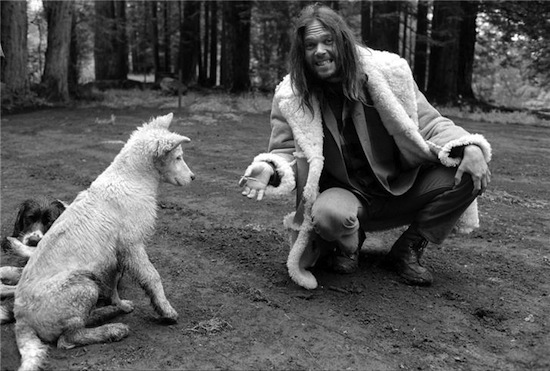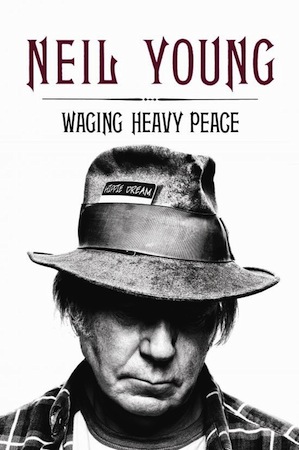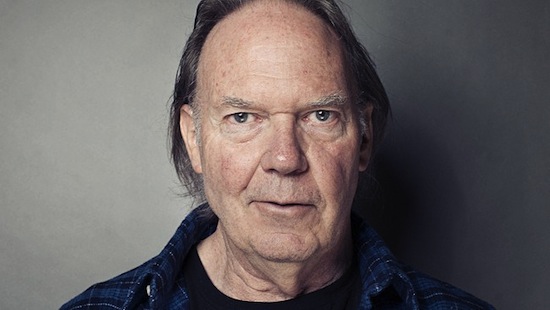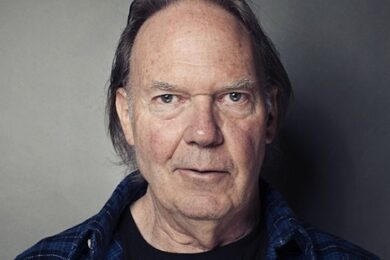"I think I will have to use my time wisely and keep my thoughts straight if I am to succeed and deliver the cargo I so carefully have carried thus far to the outer reaches. Not that it’s my only job or task. I have others too. Sacred things that I need to protect from pain and hardship, like careless remarks on an open mind."
In his new memoir, Waging Heavy Peace, the 66-year-old Young presents a kaleidoscopic view of his personal life and musical creativity: it is a journey that spans the snows of Ontario and prairies of Manitoba to the pot-filled boulevards and communal canyons of Los Angeles to his secluded ranch in the redwoods of Northern California and the contemplative paradise of Hawaii.
In a conversation with Young, fellow musician and author Patti Smith told him: “What I really love about the book: there’s no barrier between the reader and you. I started reading it and I felt sometimes it seems like it’s after hours, late at night, and you’re in your teepee talking by the fire.”
Revisiting his Canadian roots, Young shares stories about his teen years in Winnipeg, Manitoba, where he moved with his brother and mother (“Rassy was the biggest supporter of my musical endeavours and believed in me from the very beginning, offering her encouragement always.”) after his parents divorced and he began pursuing his music in earnest with a band called the Squires. Young’s mother even financed the purchase of a 1948 Buick hearse that he dubbed “Mortimer Hearseburg,” to transport the band’s instruments and equipment to performances: “Rassy paid the bill. Thank you, Mom! I couldn’t believe my good fortune. I was high as a kite! At the first gig with Mort, I felt like the Squires had a new identity. The hearse was an amazing attention-getter, and that is what being in a band needs. When you get to the gig, you got to be cool. We were the coolest thing in town with Mort.”

Young writes candidly about Crosby, Stills, Nash & Young, cutting through the myths to share clear memories of the true essence of this musical partnership, including detailed insights into the recording of the landmark CSNY album, Déjà vu, and the writing of the song, “Ohio”: “Time magazine had a picture of the girl, Allison Krause, on the cover, who the National Guard had killed along with three other victims. We were looking at it together. She was lying there on some pavement with another student kneeling down looking at her … The weight of that picture cut us to the quick. We had heard and seen the news on TV, but this picture was the first time we had to stop and reflect. It was different before the Internet, before social networking to say the least. So full of this feeling of disbelief and sadness, I picked up my guitar and started to play some chords and immediately wrote “Ohio”: four dead in Ohio.”
Writing runs deep in Young’s genes. As a little boy growing up in Omemee, Ontario, he would climb up into the attic of the family home to see his father, Scott Young, a widely published Canadian journalist, sportswriter and author, writing on his old Underwood typewriter: “Now, here I am with my computer, sixty years later, finally following in my dad’s footsteps. I am well prepared. It turns out he taught me everything I need to know, and it’s just now that I have gotten around to using my training. He said, ‘Just write every day, and you’ll be surprised what comes out.’”
Waging Heavy Peace includes some 50 photographs, many from Young’s family collection and previously unseen, adding a visual element to this very personal and engaging memoir.
The enhanced eBook edition of Waging Heavy Peace will include clips of more than thirty Neil Young songs, providing a soundtrack to his stories. Interspersed throughout the text are ten rare Young videos from his own archives, offering an uncommon glimpse behind the scenes at the man behind this memoir. In addition, a complete discography guarantees that diehard devotees and new fans alike enjoy the ultimate Neil Young experience.

Waging Heavy Peace is published in Viking Hardback on 4th October 2012, priced £25



